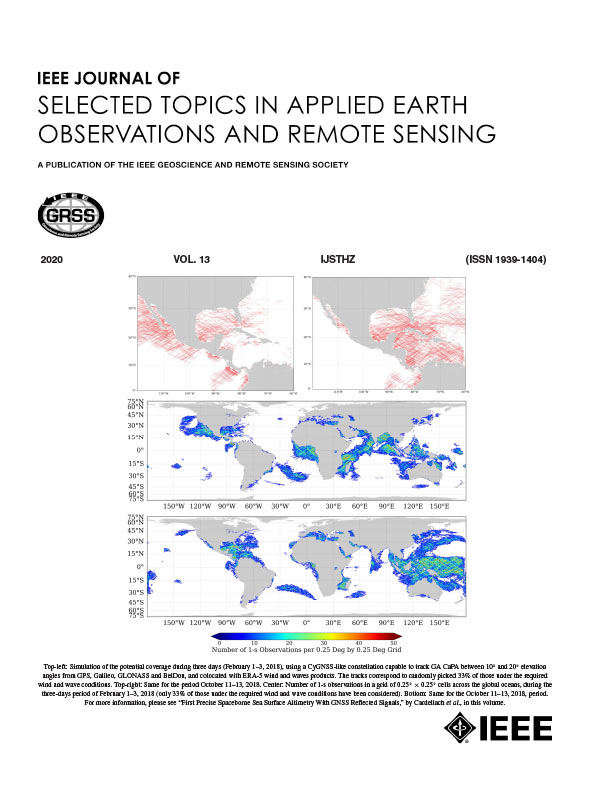Influence of 2-D/3-D Urban Morphology on Diurnal Land Surface Temperature From the Perspective of Functional Zones
IF 4.7
2区 地球科学
Q1 ENGINEERING, ELECTRICAL & ELECTRONIC
IEEE Journal of Selected Topics in Applied Earth Observations and Remote Sensing
Pub Date : 2024-09-06
DOI:10.1109/JSTARS.2024.3455791
引用次数: 0
Abstract
Optimizing the spatial distribution of urban functional zones (UFZs) effectively improves the thermal environment. This study utilized an enhanced regression tree model and relied on Ecosystem Spaceborne Thermal Radiometer Experiment data to analyze the relative contributions and marginal effects of 2-D/3-D urban morphological factors on the diurnal land surface temperature (LST) in Shenyang, China. The results showed that public and residential areas dominated Shenyang's UFZs. The temperature in industrial areas was the highest during the day, and residential and commercial functional areas are high-temperature concentration areas. Furthermore, the effects of the urban spatial morphology on the LST differed between diverse time points and UFZs. The digital elevation model and the normalized difference vegetation index contributed significantly to daytime and nighttime LSTs. Construction indicators, such as the normalized difference built-up index and the proportion of construction land, significantly impacted commercial services. Residential daytime LST had a large contribution value, and the sum of its contribution rates reached approximately 30%. Population greatly contributed to the nighttime LST of the industrial and residential zones, accounting for 16.77% and 22.06%, respectively. Vegetation contributed to the cooling effect on daytime LST in summer, especially in industrial areas, contributing 29.79%. In addition, 3-D indicators, such as building height and building density, contributed to diurnal LST. Finally, when the proportion of construction land reached approximately 45%, it negatively affected LST. In this study, the main factors affecting day and night LSTs were identified, and this work acts as a relevant strategic reference for alleviating the urban heat island effect.从功能区角度看二维/三维城市形态对昼夜地表温度的影响
优化城市功能区的空间分布可有效改善热环境。本研究利用增强回归树模型,依托生态系统空载热辐射计实验数据,分析了二维/三维城市形态因子对中国沈阳昼夜地表温度(LST)的相对贡献和边际效应。研究结果表明,沈阳的 UFZs 以公共区和居住区为主。工业区白天温度最高,居住区和商业功能区是高温集中区。此外,城市空间形态对低温层的影响在不同时间点和不同低温区之间存在差异。数字高程模型和归一化差异植被指数对白天和夜间的低温层有显著影响。建设指标,如归一化差异建成指数和建设用地比例,对商业服务业有显著影响。住宅昼间 LST 的贡献值较大,其贡献率总和达到约 30%。人口对工业区和居住区的夜间 LST 贡献很大,分别占 16.77% 和 22.06%。植被对夏季昼间 LST 的降温效果做出了贡献,尤其是在工业区,占 29.79%。此外,建筑高度和建筑密度等三维指标也对昼间 LST 有影响。最后,当建设用地比例达到约 45% 时,对 LST 产生了负面影响。本研究确定了影响昼夜 LST 的主要因素,为缓解城市热岛效应提供了相关的战略参考。
本文章由计算机程序翻译,如有差异,请以英文原文为准。
求助全文
约1分钟内获得全文
求助全文
来源期刊
CiteScore
9.30
自引率
10.90%
发文量
563
审稿时长
4.7 months
期刊介绍:
The IEEE Journal of Selected Topics in Applied Earth Observations and Remote Sensing addresses the growing field of applications in Earth observations and remote sensing, and also provides a venue for the rapidly expanding special issues that are being sponsored by the IEEE Geosciences and Remote Sensing Society. The journal draws upon the experience of the highly successful “IEEE Transactions on Geoscience and Remote Sensing” and provide a complementary medium for the wide range of topics in applied earth observations. The ‘Applications’ areas encompasses the societal benefit areas of the Global Earth Observations Systems of Systems (GEOSS) program. Through deliberations over two years, ministers from 50 countries agreed to identify nine areas where Earth observation could positively impact the quality of life and health of their respective countries. Some of these are areas not traditionally addressed in the IEEE context. These include biodiversity, health and climate. Yet it is the skill sets of IEEE members, in areas such as observations, communications, computers, signal processing, standards and ocean engineering, that form the technical underpinnings of GEOSS. Thus, the Journal attracts a broad range of interests that serves both present members in new ways and expands the IEEE visibility into new areas.

 求助内容:
求助内容: 应助结果提醒方式:
应助结果提醒方式:


